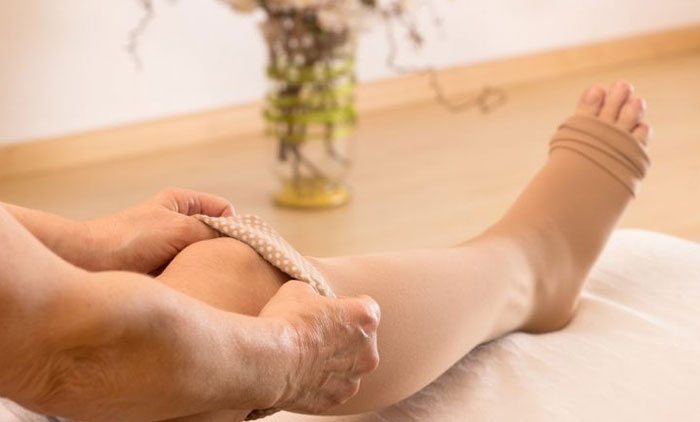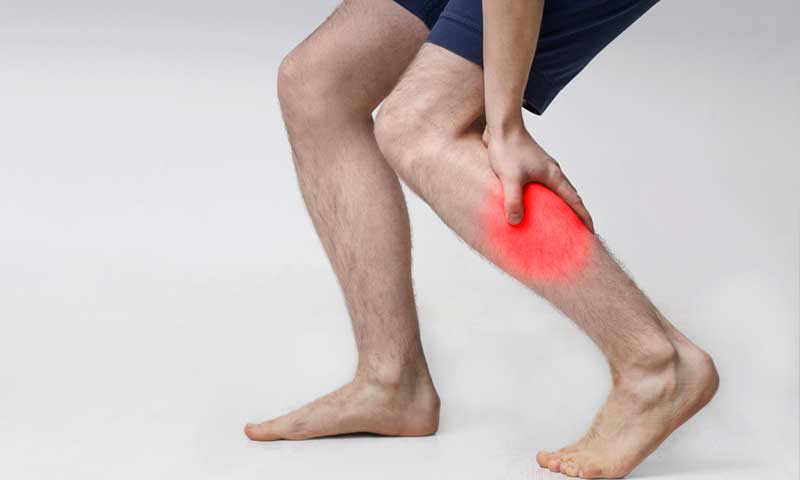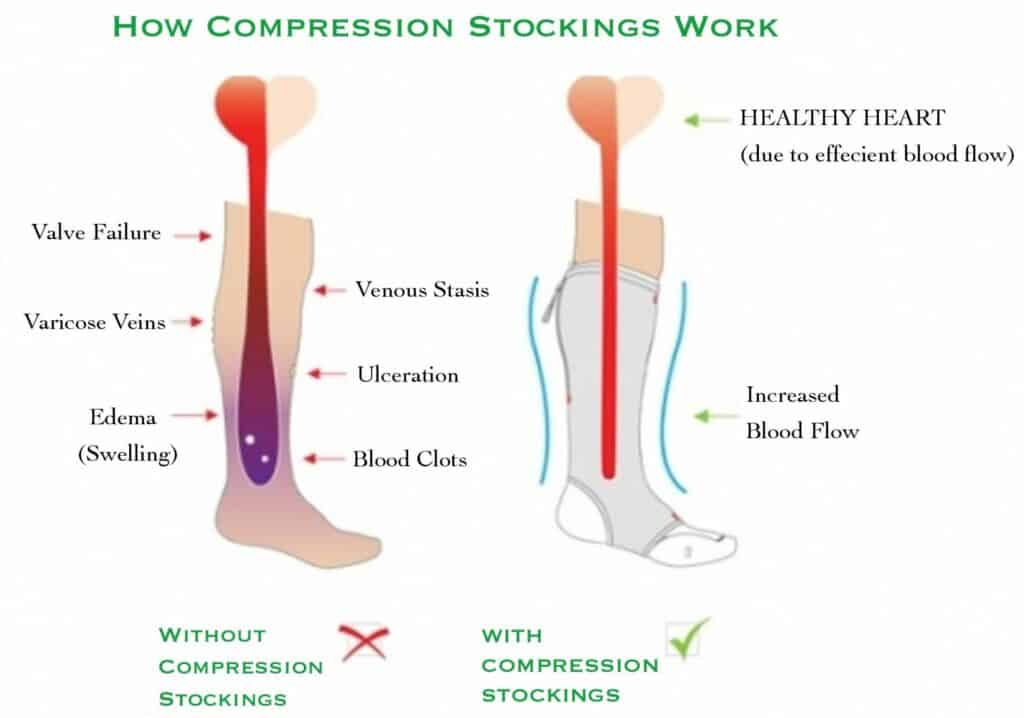Compression socks can help if you have varicose veins or if your legs hurt even though you haven’t done anything visually demanding. Compression stockings can be worn as a preventive measure or to treat pain. And so prevent the need for post-surgery care due to excessive pain. These are 9 signs that you need compression socks.
You need compression stockings if you have varicose veins in your legs due to poor blood circulation. Other signs are if your legs hurt too much after a lot of standing and sitting at work, after a long drive, or after a sporting activity.
The legs hold up the whole body, so it’s frustrating if our legs hurt all the time but we don’t know how to fix it. Here are 9 signs that will show you when it’s a good idea to start wearing compression stockings. At the end, I will give you some suggestions on how to buy them.
How do you know if you need compression socks?
You need compression socks if you have varicose veins or if your legs often hurt and swell. Your legs are tired because blood is accumulating in them and not circulating through your body. You can also wear compression socks during and after exercise to speed up recovery and beat fatigue.

These are 9 signs that you should wear compression stockings:
- Often Experience Pain In The Legs
- You have Restless Legs
- Your legs are Swelling
- Long Recovery Time After Workouts
- Pain From Traveling
- Burning, Tingling, or Numbness
- Discoloration Of The Skin Or Open Sores
- Prolonged standing or sitting at work
- You Have Cramps in Your Legs At Night
Often Experience Pain In The Legs – If you often feel pain in your legs even though you haven’t done anything physically exhausting, it’s a sign that you may need compression stockings. Leg pain can occur for a number of reasons, one of which is that we sit a lot during the day.

You have Restless Legs – Your legs hurt even when you are lying down or doing nothing physically exhausting. If your legs hurt for several days, treat yourself to a massage, or massage yourself with a massage gun. In addition, compression socks will help to speed up the blood flow in your body and relieve tired legs. The compression stockings can be worn throughout the day.
Your legs are Swelling – The legs start to swell if we spend several hours in the same position (standing or sitting). Fluid builds up in the legs, and the blood does not circulate through the body (it is harder for it to reach the heart). Compression stockings compress the leg so it can’t swell and speed up blood circulation from the heel upwards, thanks to a special stitching technique.

Long Recovery Time After Workouts – Compression socks can be worn during and after exercise. During exercise, socks make your legs feel less tired. After exercise, they help your legs recover faster. You’ll be rested faster and ready to take on the challenge again.

You can find out how compression socks can help you run and which are the best here.
Pain From Traveling – Traveling by plane, bus, or car can take several hours, and we sit the whole time. If you have problems with varicose veins or your legs often hurt. Then it is advisable to wear compression socks for the duration of the trip to prevent swelling and pain in your legs.

Burning, Tingling or Numbness – Compression stockings relieve burning, numbness and tingling in the legs caused by varicose veins. This often happens during pregnancy, but you may experience these problems even if you are not pregnant.
Discoloration Of The Skin Or Open Sores – Discoloration of the skin or open sores are an indication of possible vein disease; therefore, you may need compression socks.
Prolonged Standing or Sitting At Work – Swollen and painful legs are common in people who work in jobs requiring them to be on their feet for hours (e.g. nurses, waiters) or spend most of their time sitting position (e.g. office work, drivers).

You can avoid sore and swollen legs by changing your position from standing to sitting or vice versa every 1 hour. If this is not possible, compression socks will help to prevent blood and fluid from building up in the legs.
Read more about why nurses wear compression stockings here.
You Have Cramps in Your Legs At Night – This may be due to the heavy strain on the body caused by sporting activity and insufficient water and electrolytes in the body. When your training is intense, make sure you take plenty of water and electrolytes (magnesium).

A sufficient amount of magnesium is 200 micrograms, taken in effervescent tablets or special powders. Compression socks, which can also be worn at night to avoid cramps, can also help you recover faster.
How tight should a compression sock be?
Compression socks must be just the right fit but must not interfere with wearing. Compression stockings have certain compression level standards, of which 20-30 mmHg is the most appropriate level for most users who do not need compression stockings for medical use.
For those who need compression stockings to correct a medical problem, you should speak to your doctor, who will prescribe suitable compression stockings for you. Compression stockings with a level of 20-30 mmHg are the most common for everyday use when running. Other levels that are most common are:
- 8-15 mmHg (mild)
- 15-20 mmHg (medium),
- 20-30 mmHg (firm),
- 30-40 mmHg (extra firm) and
- 40-50 mmHg.
Which Compression Socks to Buy?
CopperZen Compression Socks – Compression Socks for Everyday
Fabric Type: 88% Nylon, 12% Copper ions (clinically proven antifungal)
Compression level: 20-30 mmHg
Size: S to XL
You will achieve relief in your feet and prevent the formation of fungi by wearing CopperZen Compression Socks. These compression socks will help you stay on your feet for hours and enjoy your favorite activities again instead of being forced to sit down every 10 minutes.
And with your purchase, you’ll receive 3 free bonuses worth over $100 to improve your diet and health and get rid of leg pain caused by reduced blood flow in your body in just 15 seconds.
Get your CopperZen Compression Socks.
Physix Gear Sport Compression Socks – Compression Socks For Sport
Fabric type: 70% Nylon, 30% Spandex
Compression level: 20 to 30 mmHg
Size: S to XXL
Get your Physix Gear Sport Compression Socks.


